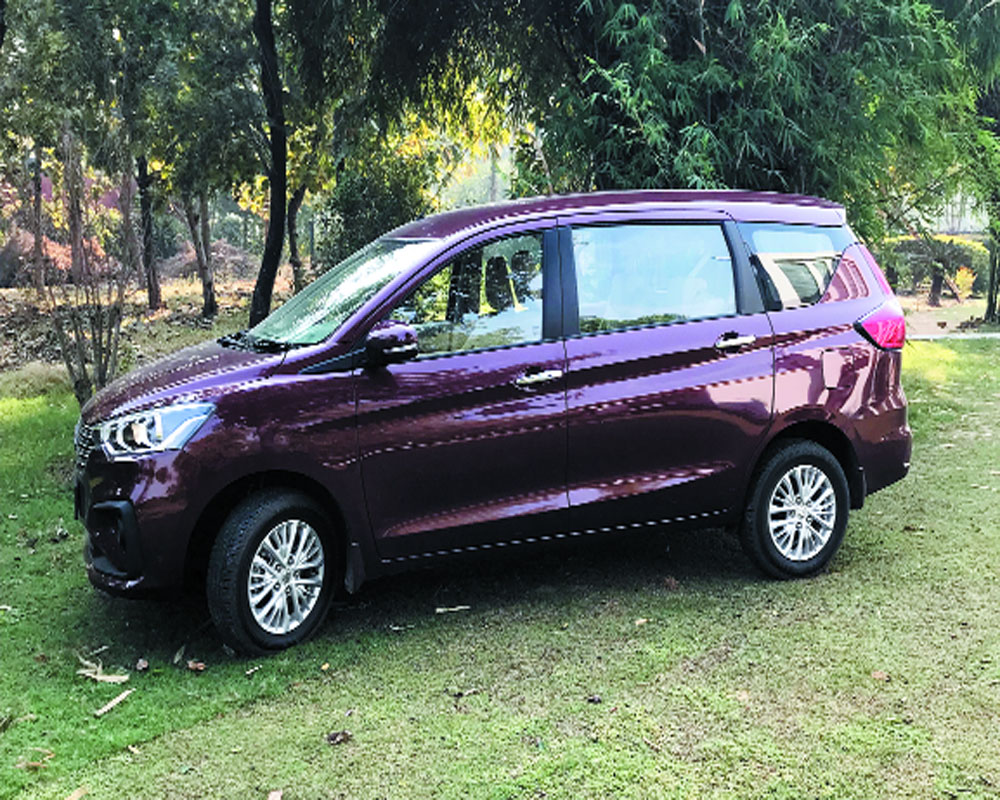The second-generation Ertiga is here, and it ticks all the boxes for a new generation model. But should you buy one?
Last week I drove the second-generation of the Maruti-Suzuki Ertiga and posted a picture on Facebook and a friend of mine called it ugly. The interesting fact to note is that this person actually owns the first-generation Ertiga and is quite happy with it. I retorted that the Ertiga is a van, well, it is a ‘people carrier’ if you wish to avoid the ‘v’ word. And ‘people carriers’ by their very definition cannot be ‘sexy’ cars, no matter how you slice it or dice it, because at the end of the day, these vehicles are all about functionality.
So yes, the new Ertiga ticks all the functionality boxes. The second-generation Ertiga is longer, wider and taller than the outgoing generation. Of course, these dimensions have not ballooned but grown slightly like all new car models tend to nowadays although the wheelbase remains the same. The car is, however, 13 centimeters longer, and while you may not think of that as a lot, it does make a significant difference to both the luggage carrying capacity and the third-row space. And these are main criteria under which you should judge the Ertiga.
To be fair, there really is not a direct competitor to the Ertiga; there are no other petrol-powered small people-carriers and no other manufacturer has a factory-fitted CNG option. Which is why the second-generation Ertiga will, as its predecessor did, dominate the fleet market. Unlike the Dzire, Maruti will not keep on churning out the previous-generation model for the fleet market, and if nothing else, the Ertiga will almost certainly be a sale success on the basis of this section of the market alone.
But the Ertiga remains very popular with large Indian families, because no matter what your thoughts about being in the third row, Maruti-Suzuki have ensured that getting in and out of that row is relatively easy. Also, the floor of the luggage area has two removable panels allowing you a bit of additional depth to store more luggage. This is one of those really useful small features. With the panels back on and the third row (and maybe even second row) down, the Ertiga can be converted rather quickly into a very spacious goods carrier, large enough to carry a cabinet when you are shifting house for example.
The interiors are, like in the earlier generation, nice and light and with a large glass area, even in the third row. In fact, unlike the earlier generation, this new Ertiga has a more flowing shape for the third row window, which gives the car a ‘floating roof’ look from outside and a nice amount of glass inside. Unfortunately, the weather being quite nippy, I did not get a chance to really try out the air-conditioner and cooling in the second and third rows but I do not believe that they will be too bad.
Up front, the dashboard on the top-end variants gets a wood finish which is quite common across the Maruti range nowadays, but the overall quality of plastics and fittings feels plush and like other new Maruti-Suzuki cars, there is a visible improvement in both the aesthetic and physical quality of the interiors, particularly the plastics. Incidentally, I’m not a huge fan of wood finishes or the swathes of chrome on the outside, but that is a personal opinion and I know that many of you readers who buy cars with wood and chrome exteriors love them.
So how is the Ertiga to drive? Well, I drove the Petrol Automatic and the Petrol manual. They feature the same new 105 horsepower 1.5 litre K15 that is there on the new Ciaz and like the sedan, both the diesel and automatic feature a new electrical system with a small lithium-ion battery that allows the car to function like a mild hybrid, that is it gives some assist to pick-up when you are accelerating, what is called ‘torque assist’ and provides enough electrical power to keep the creature comforts such as the infotainment system and air-conditioner going at a traffic light, and like on the sedan, these will have a positive impact on the fuel economy of the car. As for handling, you don’t do those so much in a people carrier, but body roll is minimal which should make journeys in the mountains less scary for those who get sick. The only issue I had overall with the Ertiga is the rather ancient four-speed automatic that Maruti-Suzuki has equipped it with although I understand Maruti is looking at a new automatic transmission for their bigger vehicles sometime next year, maybe around the time the S-Cross also gets the K15 petrol engine as some are speculating.
In conclusion, the Ertiga is not a car for me, but if you have children and go on a holiday or have to ferry them and their friends around often and you want a nice compact people carrier with decent fuel economy and do not need to worry about a diesel vehicle ban, well the Ertiga ticks all the boxes and between Rs 7.44 - Rs 9.5 lakhs for the petrol manual, Rs 9.18 - Rs 9.95 for the automatic and between Rs 8.84 - 10.9 lakhs for the diesel, it is very good value to boot.
























